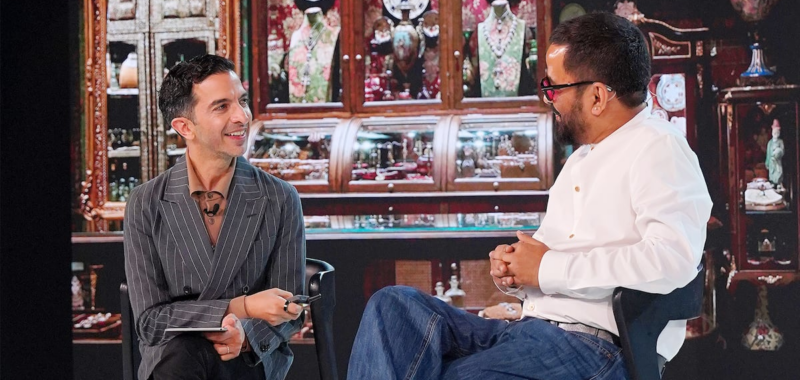
The author has shared a Podcast.You will need to accept and consent to the use of cookies and similar technologies by our third-party partners (including: YouTube, Instagram or Twitter), in order to view embedded content in this article and others you may visit in future.
Subscribe to the BoF Podcast here.
Background:
Born in the suburbs of Kolkata, India Sabyasachi Mukherjee grew up immersed in the rich cultural environment in the state of West Bengal. After attending fashion school, he focused on creating his own brand with a small team and a big vision: to create Indian fashion that honours tradition while setting a new global standard.
The journey has not always been smooth. His first foray into the global market at New York Fashion Week in 2006 was dismissed by some critics as being âtoo ethnicâ, but he remained undeterred, returning to India to build a business with power, presence, and purpose. Known for his exquisite bridalwear, masterful storytelling and museum-like flagship stores, Sabyasachi has built a business that merges cultural preservation with contemporary luxury.
Now heâs back in New York, creating a sensation with his first store outside India. The reception has been much warmer even if the core philosophy remains the same.
âThe clothing hasnât changed at all. Whatâs changed is peopleâs perception â and I think nothing succeeds like success,â he says. âThe only way you can succeed is to just stay strong. Because if you do not have a unique identity, youâll never be globally recognised.â
This week on The BoF Podcast, a conversation with Sabyasachi from BoF CROSSROADS which took place in Dubai, bringing together top business and creative leaders to examine opportunities for fashion, beauty and luxury brands in the Global South.
Sabyasachi and BoF Founder Imran Amed explore the challenges of going global on your own terms, why demonstrating value is the key to luxury in India, why he is ready to take his brand to the next level â while making a case for craft, culture and the rising power of the Global South.
The author has shared a YouTube video.You will need to accept and consent to the use of cookies and similar technologies by our third-party partners (including: YouTube, Instagram or Twitter), in order to view embedded content in this article and others you may visit in future.
Key Insights:
- Mukherjeeâs early setbacks in New York taught him that success doesnât come from fitting in, but rather from standing firm. âKeep holding onto your belief system because if you do not have a unique identity, youâll never be globally recognised.â His designs havenât changed over the years but perceptions have. âOnce you start having authority to tell people that this is the way you want things to happen, people stand up and listen to you.â
- Global brands often fail in India because they misunderstand its luxury consumer. âWhat they need to do is they need to have a stronger cultural connection with the country for people to understand why they should pay these kinds of prices,â he says. âThereâs a misnomer about India that Indians buy cheap, but thatâs not true at all. I think Indians buy value. So if you can come and show the value of your brand to India, Indians will open up their wallets.â
- Amid shifting geopolitics and US trade tariffs, Mukherjee sees an opportunity. âThis becomes a wonderful opportunity for us to say that we can together create our own dominance. Many times we think the solution only lies in the West, not knowing how much stronger the solution is within our own ecosystem,â he says. âI think a lot of people, a lot of countries, designers, markets, finance people, influencers, everybody will come together to push up the might of the Global South. Itâs going to happen for sure.â
- Mukherjee believes cultural craftsmanship should be protected on a global scale. âWhile there are certain things that can be put under tariff, I think businesses which are made with craft and which are with local cultures should be exempted so that we can let them thrive and we can make the world a more richer, diverse, and a meaningful place to live in.â

